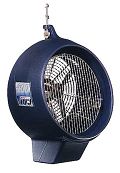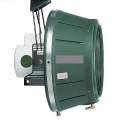 |
|
|
 |
|
|
 |
|
|
 |
|
|
 |
|
|
 |
|
|
 |
|
|
 |
|
|
 |
| Evaporative cooling fans and the risk of legionnaires disease | |
 |
|
|
 |
|
|
 |
W. Tombling Ltd.
Wembley House
Dozens Bank
West Pinchbeck
Spalding
Lincolnshire
PE11 3ND
U.K.
|
 |
  
You are here:- home
> cooling index
> evaporative cooling index
> evaporative fans index
> Evaporative cooling fans and the risk of legionnaires disease
Evaporative cooling fans and the risk of legionnaires disease
What is legionnaires disease?
Legionnaires’ disease is a potentially fatal pneumonia caused by legionella bacteria. This is the most well-known and serious form of
a group of diseases collectively known as legionellosis.
The inhalation of small droplets of water contaminated by the bacteria may give rise to infection. Legionnaires’ disease is
considered an environmental disease because its causative agent (legionella) is transmitted from an environmental source (water) to a
person.
How great is the risk of contracting legionnaires disease from evaporative cooling fans?
The risk of contracting legionnaires disease from the use of evaporative cooling fans is extremely low.
Evaporative cooling fans have been used worldwide for many years, and there has never been a documented case of
infection.
The bacteria causing Legionnaires disease are very common, but only build up to dangerous concentrations in:
|
 |
Warm, stagnant water - Evaporative cooling fans operate from a constant supply of cold fresh water, so the bacterium doesn’t
have the opportunity to multiply.
Lime scale and slime – Regular cleaning of wet surfaces with a mild bleach solution, will prevent a build up forming.
What precautions should be taken to prevent infection?
Installation
Only connect evaporative cooling fans to a fresh cold water supply.
Keep pipe runs as short as possible, and avoid ‘dead legs’ where stagnant water can gather.
Fit a drain cock at the lowest point in the system, to allow the pipe work and fan to be completely drained.
Legionella bacteria do not multiply below 20C. Make sure that the supply water is cold and insulate pipes that will be exposed to direct sunlight or run through warm areas.
Seasonal maintenance
At the end of the summer
1) Drain all water from the fan and pipes. Open the drain cock and operate the fan without water for 15 minutes.
2) Clean all wet surfaces of the fan and casing with a cloth soaked in 5ml of chlorine-based household bleach to 5l of water.
Make sure all build ups of lime scale or slime are removed. Rinse all surfaces with fresh water and wipe dry.
3) Clean the flow meter and strainer. See page 19 of the user manual for details.
Before summer starts
Close the drain cock (if fitted) and fill with clean water.
Check the operation of the unit.
During summer
When the fan has operated for more than 6 months, clean as per ‘at the end of summer’ above.
When the fan is not used for more than 30 days, clean and drain as per ‘at the end of summer’ and ‘before summer
starts’ above.
If the fan is not used for more than five days, flush the system with fresh water before use. To do this, turn the water supply on,
but not the fan for 15 minutes.
Should the supply water be treated?
We do not recommend the use of water additives, because of the possibility of workers suffering allergic reactions.
Conclusion
There has never been a documented case of Legionnaires disease caused by evaporative cooling fans. Following the simple steps above,
will ensure your workplace remains safe as well as cool throughout the summer.
|
 |
Sources of further information
For more information about legionnaires disease and the workplace visit the
HSE website
A comprehensive checklist for legionnaires disease compliance in the workplace can be found on the
London Hazards Website.
You are here:- home
> cooling index
> evaporative cooling index
> evaporative fans index
> Evaporative cooling fans and the risk of legionnaires disease
If you found this page useful, please take a moment
to tell a friend or colleague about it.
Copyright © 2004/6, W. Tombling Ltd.
|
|




